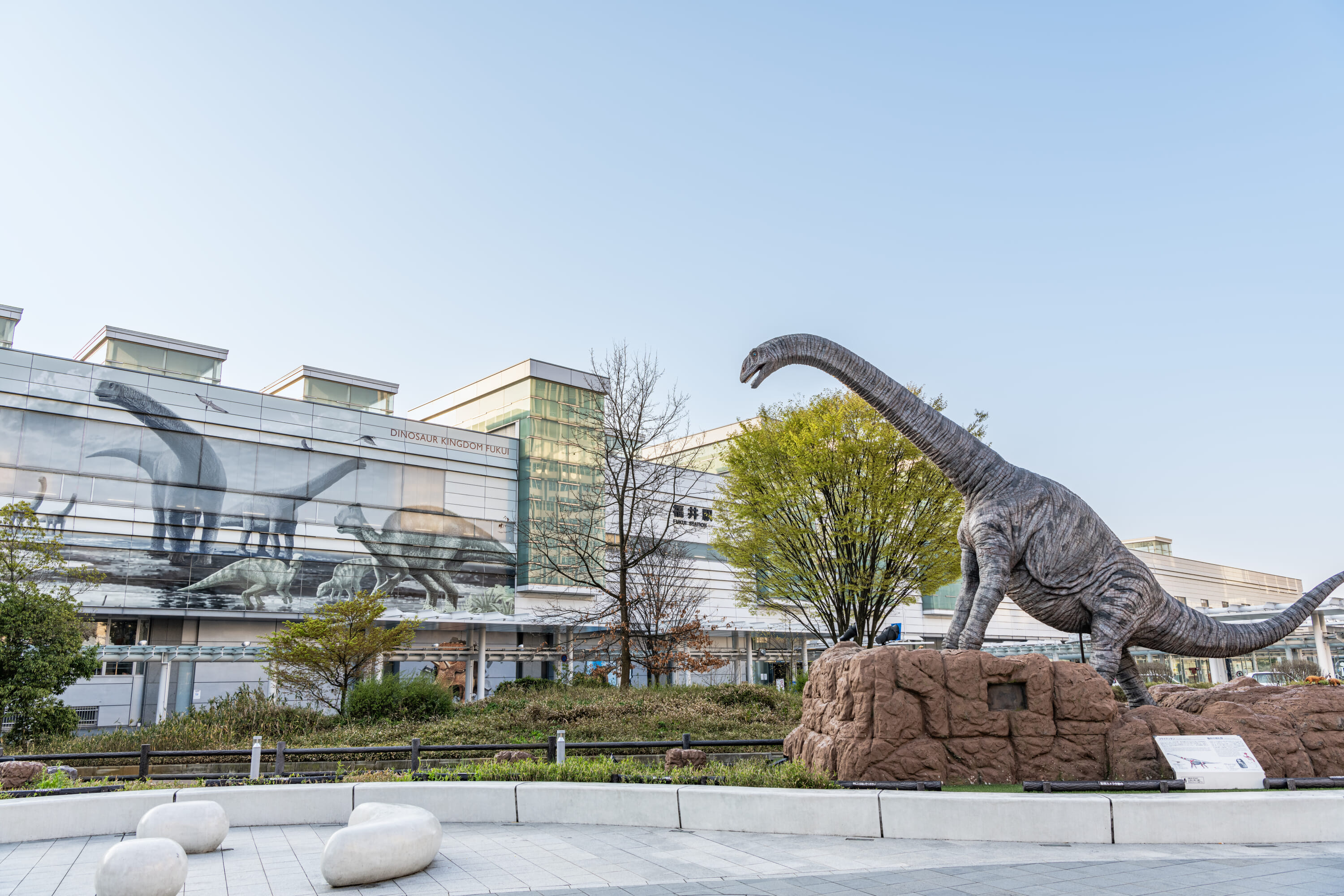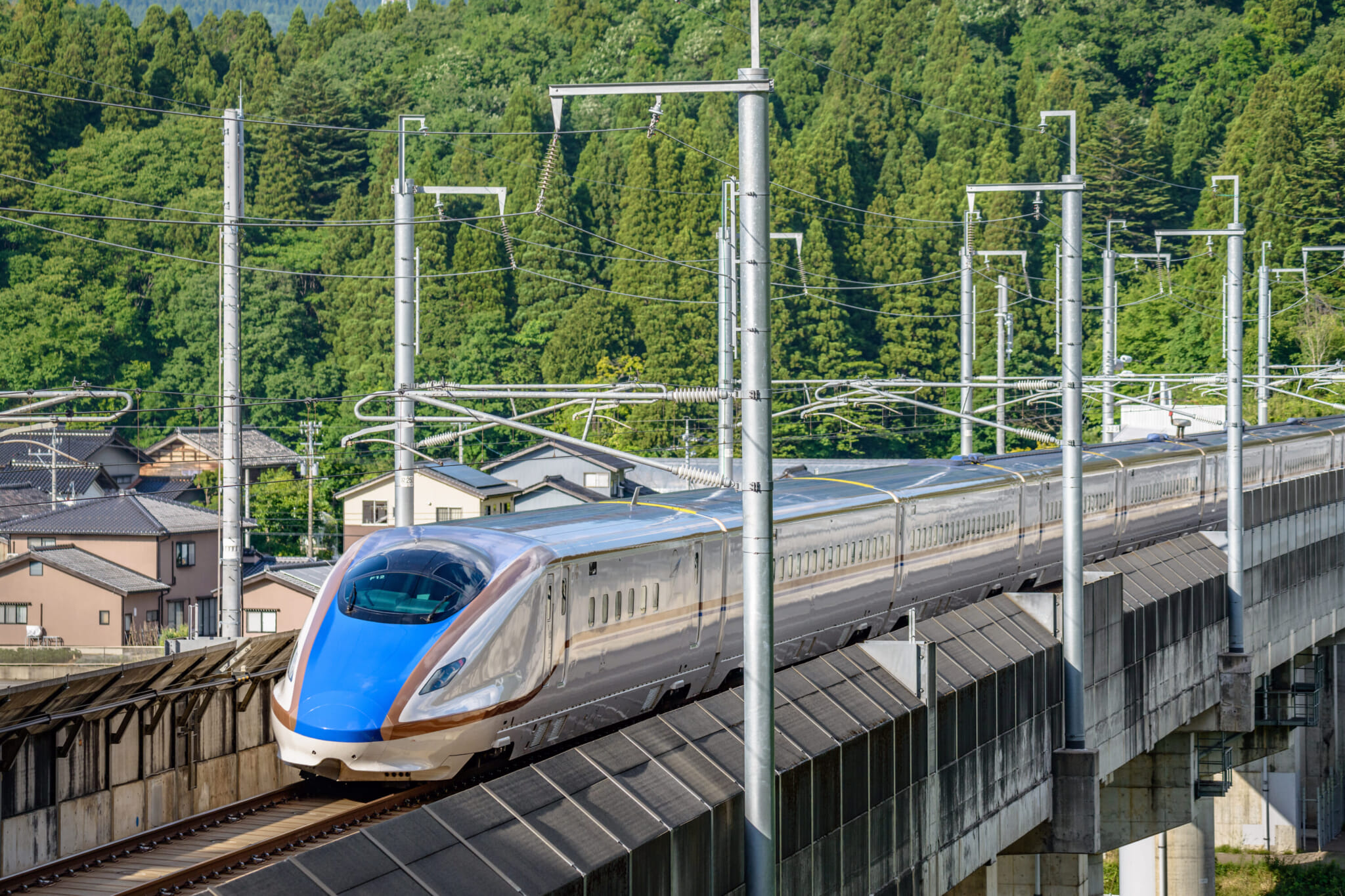From March 16, the Hokuriku Shinkansen Line is expanding between Kanazawa Station in Ishikawa Prefecture and Tsuruga Station in Fukui Prefecture. According to JR West, the expanded section is approximately 125 kilometers.
The Hakutaka trains will stop at two extra stations in Ishikawa: Komatsu and Kaga Onsen, and three stations in Fukui: Awara Onsen, Fukui and Echizen-Takefu, before reaching Tsuruga. It will make five round trips a day. The Kagayaki train will make nine round trips a day, stopping at fewer stations. The fastest train on the line will connect Tokyo and Tsuruga in just three hours and eight minutes. That’s around 50 minutes faster than the current schedule.
List of Contents:

The Charms of Fukui
Fukui is a prefecture that sometimes flies under the radar both for domestic and international travelers. It’s probably most well-known for being the dinosaur capital of Japan, with around 80% of the nation’s fossils discovered there. The prefecture’s Dinosaur Fossil Evacuation Survey Project began in 1989 and 20 years later, the Dinosaur Valley Fukui Katsuyama Geopark — that encompasses the entire area of Katsuyama city — was recognized as a geopark by UNESCO. The main focal point of the city is the dinosaur museum and its outdoor forest park.
Another place worth visiting in Fukui is Daihonzan Eiheiji, one of Japan’s most impressive looking and important temples that was founded by Zen Master Dogen in 1244. You’ll also find the magnificent Maruoka Castle, an Important Cultural Property of Japan, where you can see one of only 12 original castle towers that remain in the country today. And then there’s Tojinbo, a stunning series of cliffs on the Sea of Japan that has been designated as a national Natural Monument. A great time to visit Fukui is in spring to enjoy the cherry blossoms, particularly along the Asuwa River.
Unwind in an Onsen
No trip to Japan would be complete without a relaxing soak in a hot spring bath. Awara Onsen resort has been welcoming guests since 1883, when its spring source first welled up. It’s now considered a haven for wellness enthusiasts with more than 70 known source springs and over 20 ryokan inns. Kaga Onsen in Ishikawa, which boasts a much longer history, is another station worth stopping at. It’s a 1,300-year-old hot spring resort town built around four onsen villages. As well as many inns, these villages all feature low-cost public bathhouses known as soyu.









